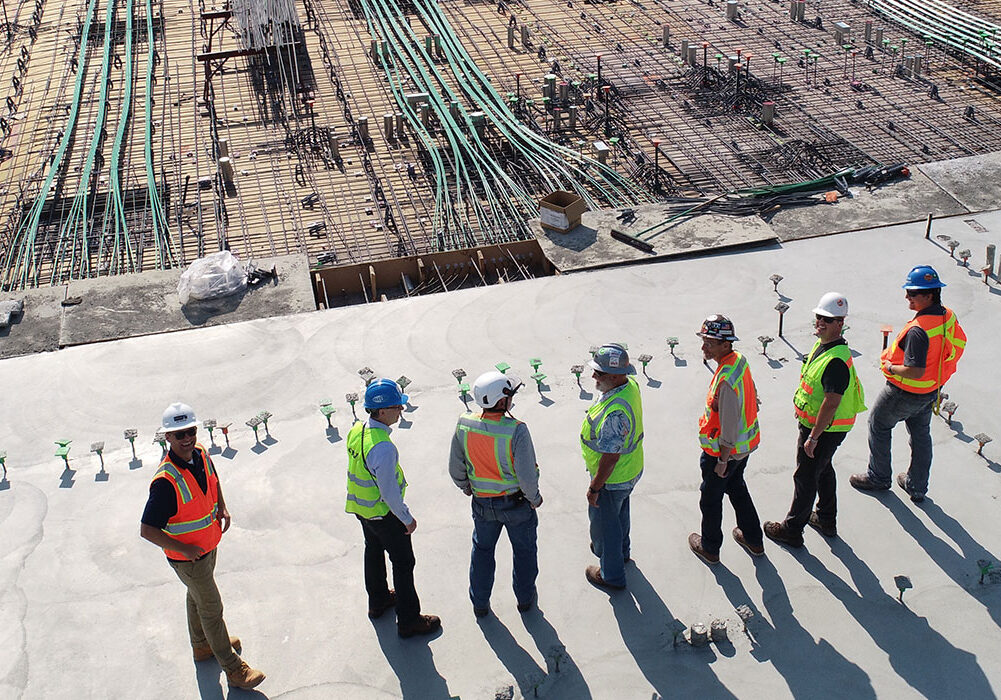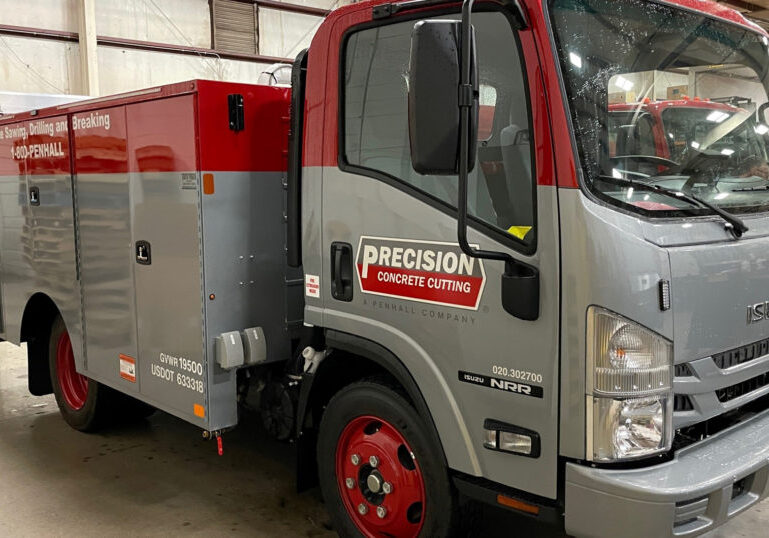By: Ray Dickinson
It goes without saying that equipment is a vital part of any job. Let’s take a look back in time and see how far equipment has come since Penhall’s start.
The Core Drill
Just recently the core drill has become more advanced due to automation. One of the biggest changes with this piece of equipment is its ability to electronically switch speeds. Before, there were two to four speeds, yet the operator would have to manually change speeds if needed. For example, you could be drilling at the highest speed and then an obstruction comes along and you would then have to turn off the machine, lower the speed, then turn back on the machine and continue with the job – talk about a pain.
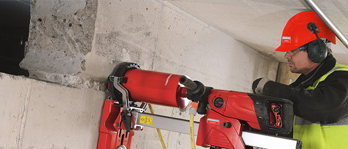 Now, there is a push button – as you’re drilling and you come to an obstruction, you don’t shut off the machine, you can just switch speeds automatically. This has greatly improved the efficiency of operators because every second on the job counts, and those lost seconds of manually switching speeds add up.
Now, there is a push button – as you’re drilling and you come to an obstruction, you don’t shut off the machine, you can just switch speeds automatically. This has greatly improved the efficiency of operators because every second on the job counts, and those lost seconds of manually switching speeds add up.
The Wall Saw
This piece of equipment for concrete cutting has improved by leaps and bounds since automation. During the 70’s, there was a lot of hands-on involvement with the operating of the wall saw. Many of these machines were air powered,so they were slow, loud, and there was dust everywhere – not a great combination. And on top of that, due to the lack of horsepower, an operator had to start with a smaller blade first and make a couple passes before reaching the desired depth. Also, there were hand crank drive systems that would then allow the operator a means to travel the saw unit one way or another on the wall.
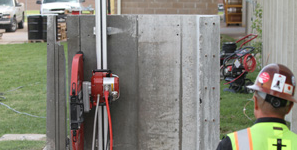 Eventually auto feed emerged where you could crank it and the unit would travel by itself. However, if the operator wanted it to move another direction, they would have to manually crank the unit again.
Eventually auto feed emerged where you could crank it and the unit would travel by itself. However, if the operator wanted it to move another direction, they would have to manually crank the unit again.
In the early 80s, saws began to incorporate the new technology of hi-cycle power used by military aircrafts in order to increase horsepower and speed. The decade also saw the introduction of water cooling for saw units. From there emerged the remote control unit to delegate the travel of the unit along the wall. Today, technicians can now stand back and control the path of the blade without being very close to the equipment. This allows for operators to be safer than ever– something that Penhall is always focused on.
The Flat Saw
This piece of equipment has probably seen the most change over the decades. In the 60’s to early 80’s, the flat saw was started with a hand-crank to start the machine. The operator would have to go to the side of the engine, flip a start switch and manually turn a hand crank in order to get the engine started – similar to how they used to start old cars! The engines were small compared to today’s machines. They were air-cooled, not water cooled engines, which just had a gear chain drive and a sprocket andonly had 30 horsepower with one single drive. All these factors meant that the operator had to run a much smaller blade at first and make several passes to go to a certain depth. For example, an old flat saw an operator would use a 14” diameter blade just to get 4” deep to start. Then another pass was needed with an 18” blade just to get 6” deep.
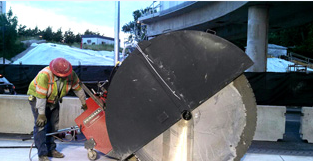 Currently, the flat saw machine is drastically different. Now an operator can use 18” or 20” blades to start and cut 6” deep in one pass. The current flat saws also have a push button starter, 3 speed transmission, hydraulic drive, and diesel engine. Place a car body on them and you could drive that thing!
Currently, the flat saw machine is drastically different. Now an operator can use 18” or 20” blades to start and cut 6” deep in one pass. The current flat saws also have a push button starter, 3 speed transmission, hydraulic drive, and diesel engine. Place a car body on them and you could drive that thing!
The rise in technology has led to greater efficiency overall. Before with the old flat saws, you might only be able to cut 3,000 to 4,000 feet of 4 inch deep asphalt in a day. Now with the new equipment, an operator can do twice that amount in the same time!
So what is on the horizon for new technology? Eventually, wall saws will have wireless controls and core drills will be automated and only require operators to dial in dimensions. However, no one knows exactly what type of equipment will be used in the coming decades, but whatever new technology brings to equipment is sure to help make each jobsite more efficient and a safer place – two things that both we and our customers like.

